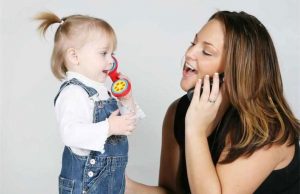Patients with different hearing loss show different hearing impairments. The improvement of the patient’s hearing threshold reduces the dynamic range of hearing, and the abnormality of the sense of loudness also causes a decline in speech resolving power.
In order to more accurately compensate the patient’s hearing loss, the audiologist and the fitter are committed to finding a regular parameter between the hearing loss and the amplification characteristics of the hearing aid, based on the pure tone audiogram, combined with the speech spectrum and the patient. The auditory loudness information has developed some regular parameters, which constitute the hearing aid fitting formula.
In order to make the fitting formula more precise, more and more factors are taken into consideration, and many new formulas are also introduced. Today, Xiaobian wants to tell the three classic fitting formulas:NAL-NL1formula,NAL-NL2formula,DSL-V5formula.

NAL-NL1公式
NAL-NL1The formula is1999The fitting formula introduced by the Australian National Acoustics Laboratory for nonlinear amplified hearing aids, through the different intensity of speech, gives the wearer maximum verbal intelligibility. Mainly have the following characteristics:
1The gain compensation for conductive hearing loss is derived from the air-bone conduction difference;
2Gain compensation for sensorineural hearing loss is based on the air conduction threshold;
3For the purpose of verbal communication, the gain of each frequency is related to the hearing threshold of the speech frequency;
4)对1kHZThe following low frequency components are more attenuated, and the frequency compensation gain for the heaviest loss is small;
5For the steeper descending hearing curve, the gain between the frequencies is flattened and the compression ratio is smaller.

NAL-NL2公式
NAL-NL2是在NAL-NL1Based on the launch.NAL-NL2The updated speech recognition mode provides more verbal intelligibility, and more psychoacoustic factors are considered in the calculations, resulting in a more personalized first fitting result. Mainly have the following characteristics:
1Age: Children get a higher gain than adults;
2Gender: Women get less gain than men;
3Language: Different languages have different gains, and those with tones (such as Chinese) have lower frequency gain and lower high frequency gain;
4) Hearing aid wearing experience: the hearing aid wear experience is as high as the user without wearing experience10dBGain.

DSL-V5公式
DSL-V5Formula2005Launched in the year,DSL-V5The formula has been updated in both the calculation method and the target gain. The main features are as follows:
1Calculation method: It mainly increases the calculation method of infants and young children, and uses the estimated threshold as the basis of hearing aid fitting. And prefer to use infants and toddlersRECDThe value is fitted. If there is no individual value, use the latestRECDThe norm data is fitted.
2Target Gain: Considering more factors, such as age, listening environment, etc., different compensation for different situations.
3) With an interpolation program, you can complete the audiogram (which will not be displayed) and then obtain the target gain of all frequency bands, making the fitting more accurate.

When debugging the hearing aid, the fitter should help the patient to select the appropriate fitting formula according to the specific situation. After the selection, the subjective response of the patient should be combined with fine adjustment in time to make the hearing compensation more accurate for each patient.
Link:Three classic fitting formulas for hearing aids
REF: Hearing aids China, BTE Hearing Aids, Digital Hearing AidsThe article comes from the Internet. If there is any infringement, please contact [email protected] to delete it.



